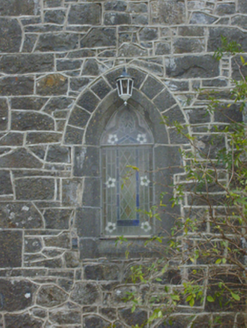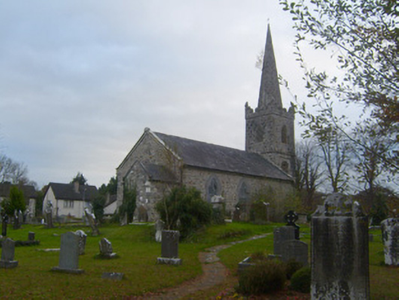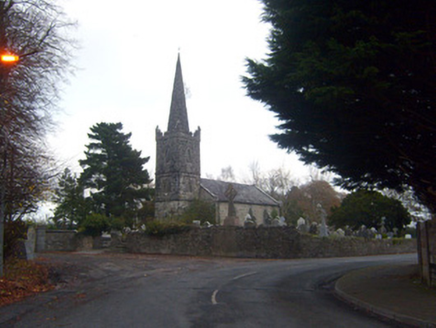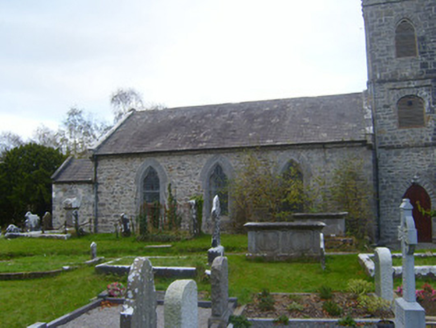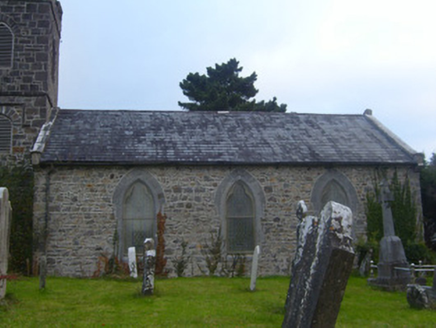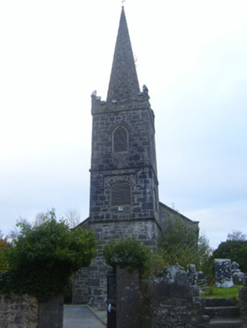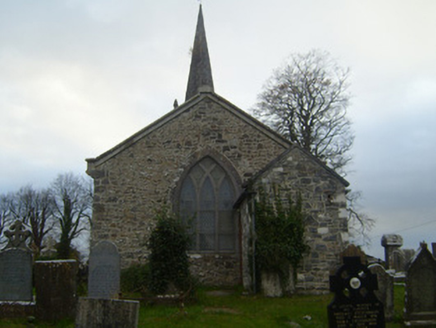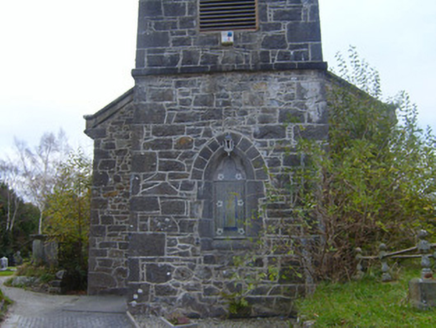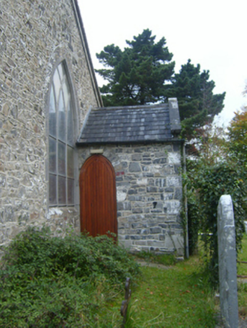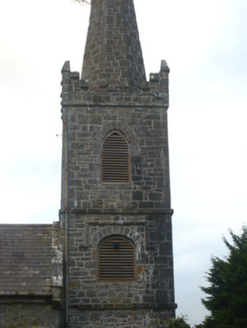Survey Data
Reg No
21818003
Rating
Regional
Categories of Special Interest
Archaeological, Architectural, Artistic, Social
Previous Name
Kilmurry Church
Original Use
Church/chapel
In Use As
Community centre
Date
1800 - 1815
Coordinates
162308, 157618
Date Recorded
09/11/2007
Date Updated
--/--/--
Description
Freestanding Board of First Fruits Church of Ireland church, built in 1812, comprising three-bay nave, three-stage square-plan pinnacled tower with spire to front (west) elevation, and single-bay single-storey vestry to east elevation. Pitched slate roof to with limestone copings, eaves course and cast-iron rainwater goods. Dressed limestone spire to tower with cast-iron weathervane. Rubble limestone walls having cut limestone stringcourses to tower. Pointed arch openings to nave having cut limestone surrounds with inset trefoil-headed lancet stained glass windows. Pointed arch opening to east elevation having limestone surround and Y-tracery stained glass windows. Pointed arch opening to tower, first stage, east elevation having cut limestone surround and inset trefoil-headed stained glass window. Camber-headed opening to tower, second stage with cut limestone label mouldings, voussoirs and timber louvered fittings. Pointed arch opening to tower, third stage having cut limestone voussoirs and timber louvered fittings. Pointed arch opening to tower, north elevation, with timber battened door. Pointed arch opening to chancel, south elevation having timber battened door. Graveyard to site. Pair of cut limestone square-profile piers to east with single-leaf cast-iron gate. Rubble limestone boundary walls with stile to east.
Appraisal
This is a picturesque and modest scale church, the form and arrangement of which alludes to the standard approved by the Board of First Fruits. It retains most of its original form and massing, together with the remains of some important salient features and materials, which enhance the historic quality of the site. The church forms an attractive landmark and contributes positively to the visual appeal of the area. The Board of First Fruits granted a loan of £580 in 1812 for its construction.
